Asset Tracking With Barcode And RFID Tags
Effective asset management requires choosing suitable tagging and scanning technologies to facilitate comprehensive tracking, verification, and asset auditing. The ideal technology combination allows for extensive audits, swift asset movement transactions, and maintenance tracking, ensuring a detailed audit trail over the asset’s lifecycle. The choice between RFID and Barcodes hinges on environmental factors, tracking needs, budget, and growth potential.
Why Should Assets Be Tagged?
Organisations can reduce the risk of losing assets that are essential to operations by having their assets tagged, and this information recorded in an asset register. Knowing where your assets are located, and who is using them, significantly reduces the risk of theft and creates employee accountability. Another key advantage of tagging assets is to ensure their physical location corresponds with the location recorded in your asset register. Auditing assets is a process that keeps your data up-to-date in your asset management system.
An effective asset tagging system is vital to managing and tracking your physical assets. The process includes:
- Fixing a tag/label onto the assets
- Capturing the tags and other relevant information
- Recording that information into an asset register
- Periodic auditing to ensure asset is still locatable
What Is An Asset Tag?
An asset tag is a distinctive label that assigns a unique number to an item of equipment or asset for identification purposes. Asset tags are usually made of durable materials like anodized aluminium or laminated polyester. Asset tags may also include the company’s logo and information on the equipment and are used to track and manage assets with the help of asset tracking software and reader technology.
What Is Barcode Tracking?
Barcodes are a means for tracking assets by way of Barcode tags/labels. They are machine-readable patterns of black and white lines that encode information. They can store up to 7000 characters and are customisable. Barcodes are the most cost-effective and provide easy accessibility to asset data.
What Is RFID Tracking?
Radio Frequency Identification (RFID) is a means for tracking assets by way of RFID tags which store information electronically. RFID tags do not require ‘line of sight’ which creates huge reductions in the time taken for locating items as well as auditing processes. RFID automates time intensive audits of high volumes of assets and equipment. Offering a fast, accurate and discreet (tags can be hidden within an asset) method of identifying fixed and mobile assets.
Key Benefits Of Barcode Tracking
Barcodes offer a cost-effective, easy-to-implement solution ideal for businesses with tight budgets. They are versatile across various industries, enhance data accuracy by reducing human error, and expedite processes, improving productivity and customer service.
Key Benefits Of RFID Tracking
RFID technology streamlines data collection with its contactless functionality, minimising manual entry errors for precise tracking. RFID reading technology surpasses barcode technology with its ability to read multiple tags at once, speeding up asset audits. The tags are durable against damage, can be inserted into items (readers can scan through materials) and have a high distance read capacity.
Tracking RFID Tags Automatically
Tracking assets automatically with RFID fixed readers offers two major benefits; automated workflows relating to asset movements and automated asset data collection. RFID fixed readers (mounted on walls, ceilings, or doorways) will scan the RFID tags for you. Ensuring that your assets’ last seen location is recorded in the asset register.
RFID fixed readers have a fast read rate and a consistent performance in most environments. They can have a reading distance of up to 30 meters depending on the use case of the assets (how they are carried, stored, or moved through the fixed reader gantries). Fixed RFID solutions require extensive testing for each location against use cases of each asset, together with the appropriate RFID tags tested for optimum outcomes.
What You Need To Consider
Environment And Surface
What kind of environment will the tag need to endure (e.g., indoor/outdoor, temperature (heat, cold), exposure to weather (sun, rain, wind) and what surfaces will these tags need to be attached to? UV stability, chemical resistant, tear resistant, waterproof and mountable onto materials such as metal are all considerations. If there is more than one item surface type, a different tag should be chosen for each. Although this may not be as critical for standard barcode or QR type tags, it is particularly relevant when using RFID Tags.
The RFID tag’s antenna is very sensitive to the type of material it is placed on because of the way it sends and receives signals. Attaching a tag to an incompatible type of surface material could result in a lower read range, lower read rate, or no reading at all. The most well-known surface material for crippling read range when tagged with the wrong type of RFID tag is metal. Metal causes problems with RFID for two reasons:
- Metal reflects RFID waves
- RFID tags are manufactured to perform on low-dielectric surfaces (plastic, wood, cardboard) not high-dielectric surfaces like metal
There are two easy ways to solve this issue, either purchase a metal-mount tag that has a built-in, low-dielectric backing or is tuned accordingly, or purchase a tag and place a low-dielectric material such as foam, in between the tag and the metal object.
Tag Position
Think carefully about the advantages or disadvantages of tag placement. Keep in mind when you need to read/scan the tag in the future (e.g., audits) how accessible is the tag and how well can scanners read it. A tag on the back or under an asset may not provide handy accessibility to the tag reader. Certain positions may expose the tag to tampering or heavier wear and tear.
Note only RFID tags can be embedded inside an item as they do not require ‘line of sight’. Hand-held (mobile) RFID scanners (or readers) use radio waves, that can pass through some solid objects to read the RFID tag. Meaning an RFID tag can be hidden from sight but still be identifiable by the reader.
Tag Size
The size of a barcode label usually depends on the amount of data that needs to be encoded and the available space on the items. Deciding on either tag types, a tag size is based on the logical space available, or the distance which may be involved to scan the item during a future audit. The size of an RFID tag is related to the read range. If you need a read range of several meters, the suitable tag will most probably have a bigger size than if you need a read range of a few centimetres.
Tag Material
The material from which the asset tag is made, and how it can be attached (e.g., adhesive, rivets, key ring, etc.) requires consideration. Tags can be printed on various synthetics, aluminium and stainless-steel material. Barcode and RFID tags can be made to withstand abrasion, extreme temperatures and weather conditions, and exposure to UV, chemicals and solvents.
Polyester barcode tags have an expected interior life of 10+ years and exterior life is 2+ years. Metal (Aluminium) foil barcode tags have an expected exterior life of 20+ years and can be placed on curved and flat surfaces. While rigid metal (Aluminium) tags are designed with extreme durability to withstand the harshest environments for indoor and outdoor tracking applications with a life of 20+ years.
An RFID transponder (tag) is primarily made of hard plastic to protect them. Some have been embedded in ceramic to protect them from heat whilst there are also tags that can be embedded in metal. In a dry environment (moderate temperature) an RFID tag can continue to perform normally for an indefinite period of time. But humidity and other environmental factors will affect the microchip and the tag may only have a lifespan of roughly 10 years.
Inside or Outside of Item
Because an RFID scanner does not need to have a visual connection with the tag, RFID tags can be placed inside or under the equipment and still be scanned. Hand-held (mobile) and fixed RFID scanners (or readers) use radio waves, that can pass through some solid objects to read the RFID tag. Meaning an RFID tag can be hidden from sight but still be identifiable. Whereas Barcodes require visibility of the tag.
Information On Tag
Asset tags cater primarily to basic tracking needs, encoding a unique identifier that links to an asset’s record in an asset management database. However, you can add whatever is important in your organisation on the tag such as your company logo and information such as the serial number and manufacturer or provider. But remember the more information on a barcode the bigger the label. Whereas RFID tags store information electronically so the capacity of data storage is important.
Hardcat’s software solutions are the backbone of your Barcode and RFID tracking and tagging solution, providing secure and centralised access to pertinent information about each asset. Let the Hardcat Professional Services Team assist you in deciding which tagging solution best suits your environment and operations. Our specialist partners complement our asset management software with physical tags and reader technology that enable accurate and efficient reading of each asset’s unique identification, up-close or at a distance. Our software supports the use of a variety of Barcode symbology and RFID active and passive tracking technologies.












